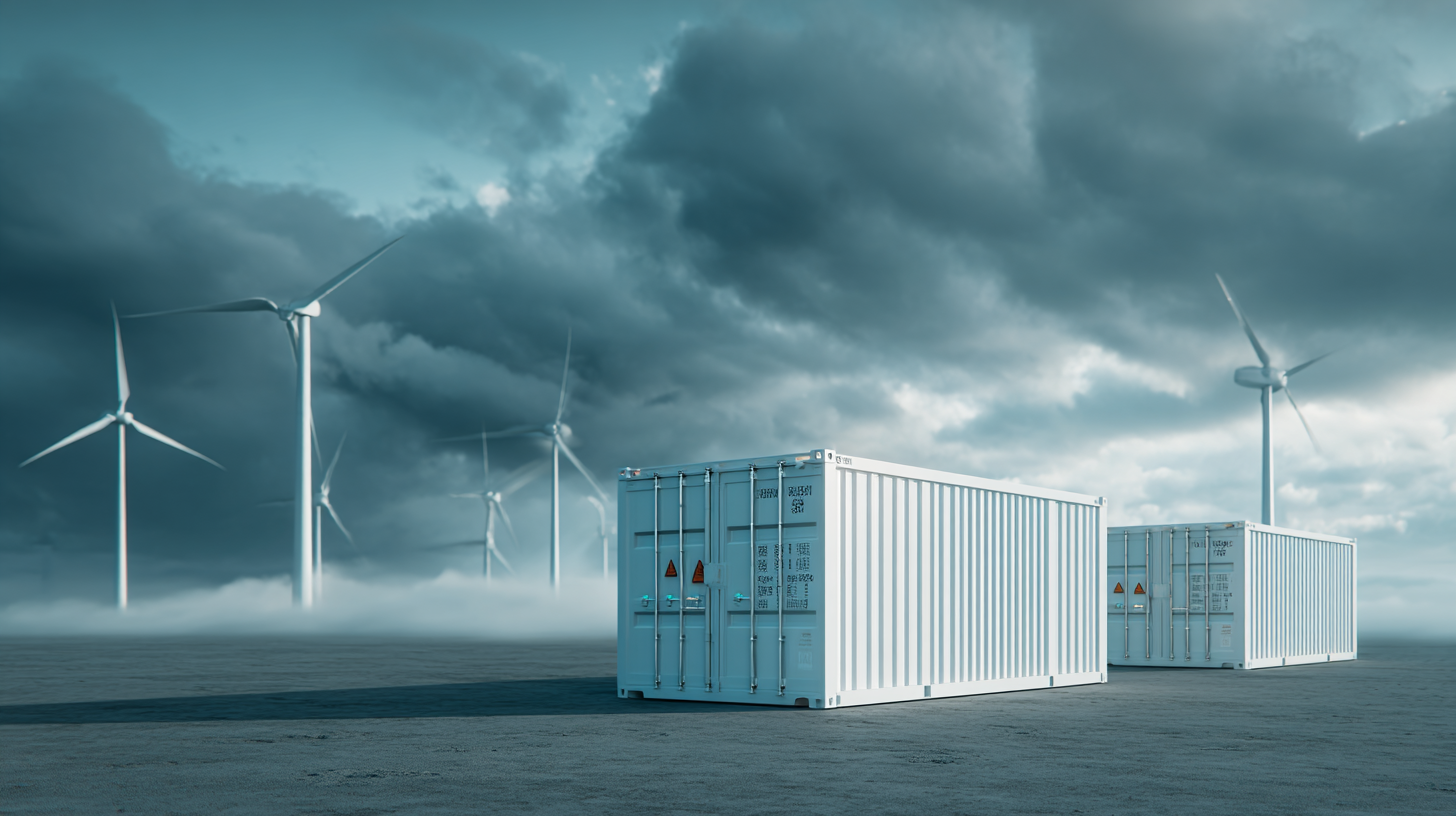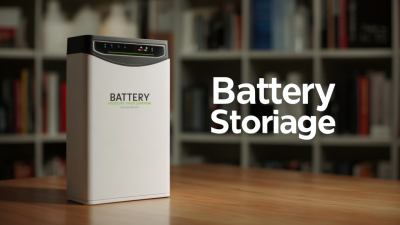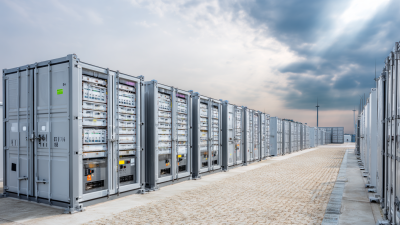Exploring the Future: How Power Storage Batteries Will Transform Renewable Energy
As the world increasingly turns towards renewable energy solutions to combat climate change and reduce our reliance on fossil fuels, the role of power storage batteries has never been more crucial. Power storage batteries are set to revolutionize the way we harness, store, and utilize renewable energy, providing the necessary infrastructure to overcome the intermittent nature of sources like solar and wind. By capturing excess energy generated during peak production times and dispatching it when demand surges, these advanced storage systems not only enhance grid stability but also empower consumers with greater energy independence. The future of renewable energy hinges on the innovative evolution of power storage batteries, which will enable a seamless transition to a more sustainable energy landscape. In this exploration, we will delve into the advancements in battery technology, the importance of efficient energy storage, and how these innovations will drive the transformation of our energy systems.

The Role of Power Storage Batteries in Enhancing Renewable Energy Efficiency
Power storage batteries play a crucial role in enhancing the efficiency of renewable energy sources. With the increasing adoption of solar and wind energy, the ability to store excess power generated during peak times is essential. Batteries not only capture this surplus energy but also release it during periods of high demand or low production, ensuring a consistent energy supply. This capability significantly mitigates the intermittent nature of renewable sources, allowing them to become more reliable and thus a major contributor to the energy grid.
Moreover, advancements in battery technology, such as improved energy density and faster charging times, further amplify their impact on renewable energy systems. By integrating high-capacity storage solutions, energy providers can optimize the utilization of renewable assets, thereby reducing dependency on fossil fuels. This enhancement not only leads to increased overall efficiency but also supports the broader transition towards a sustainable energy future, enabling communities to become more resilient in the face of fluctuating energy needs. The ongoing development and deployment of power storage batteries are pivotal in realizing the full potential of renewable energy technologies.
Innovative Technologies in Battery Storage: Pioneering a Green Future
 The advancement of innovative technologies in battery storage is crucial for pioneering a green future. As the demand for sustainable energy solutions continues to grow, researchers and companies are exploring cutting-edge battery chemistries that enhance energy density and cycle life. For instance, lithium-sulfur batteries promise significantly higher efficiency compared to traditional lithium-ion batteries, while solid-state batteries are paving the way for safer and more compact storage options. These developments not only improve performance but also contribute to lowering costs, making renewable energy more accessible.
The advancement of innovative technologies in battery storage is crucial for pioneering a green future. As the demand for sustainable energy solutions continues to grow, researchers and companies are exploring cutting-edge battery chemistries that enhance energy density and cycle life. For instance, lithium-sulfur batteries promise significantly higher efficiency compared to traditional lithium-ion batteries, while solid-state batteries are paving the way for safer and more compact storage options. These developments not only improve performance but also contribute to lowering costs, making renewable energy more accessible.
Moreover, the integration of smart grid technology with advanced battery storage systems is transforming how we harness renewable energy. By facilitating real-time energy management and demand response capabilities, these technologies enable a more flexible and resilient power system. This synergy allows excess energy generated from renewable sources—such as solar and wind—to be stored and utilized when demand peaks, ensuring a reliable energy supply. As these innovative battery technologies evolve, they will play a pivotal role in shaping a sustainable future by facilitating the transition to a cleaner, more efficient energy landscape.
Challenges and Solutions in Energy Storage for Renewable Sources
Energy storage is a critical component in maximizing the potential of renewable energy sources such as solar and wind. One of the key challenges in energy storage is achieving sufficient capacity to balance intermittent energy production. Renewable sources are often subject to fluctuations based on weather conditions and time of day, making it difficult to supply a stable energy output. Current battery technologies, like lithium-ion, face limitations in both energy density and lifespan, which can hinder their effectiveness in long-term energy storage solutions.
To address these challenges, researchers are exploring alternative storage solutions, including solid-state batteries and flow batteries, which could offer higher efficiency and longevity. Additionally, advancements in smart grid technologies can facilitate better energy management and distribution. Integrating artificial intelligence in energy storage systems may also optimize energy usage, ensuring that power is used more efficiently when generated. As innovations continue to emerge, the future of energy storage appears promising, potentially revolutionizing the renewable energy landscape and paving the way for a more sustainable, energy-efficient future.
| Storage Technology | Energy Density (Wh/kg) | Cycle Life (Cycles) | Charge Time (Hours) | Cost (USD/kWh) |
|---|---|---|---|---|
| Lithium-Ion | 150-250 | 500-1,500 | 1-4 | 300-600 |
| Lead-Acid | 30-50 | 300-1,200 | 8-16 | 150-300 |
| Flow Batteries | 20-35 | 2,000-10,000 | 2-6 | 250-500 |
| Sodium-Sulfur | 100-150 | 1,000-4,500 | 6-8 | 200-350 |
| Solid-State | 300-500 | 1,000-3,000 | 1-3 | 500-800 |
The Economic Impact of Battery Storage on Global Energy Markets
As the world increasingly shifts towards renewable energy sources, the role of power storage batteries is becoming vital. These technologies not only enhance the efficiency of solar and wind energy but also significantly impact global energy markets. The ability to store energy for later use helps to balance supply and demand, especially in regions heavily reliant on intermittent energy sources. This transformative shift fosters energy independence and can lead to reduced reliance on fossil fuels, ultimately influencing energy prices on a global scale.
Tips for Navigating Economic Changes: Stay informed about advancements in battery technology and government policies supporting renewable energy initiatives. These factors will shape market dynamics and influence investment opportunities in emerging technologies.
Moreover, the integration of battery storage systems will likely stimulate job creation and economic growth in various sectors, including manufacturing and services. This burgeoning market offers investment potential, with companies involved in battery production and energy management poised to capitalize on the increasing demand. Understanding these trends is essential for both investors and policymakers as they navigate the evolving landscape of global energy markets.
Tips for Investors: Consider diversifying your portfolio with stocks of companies focused on battery technology, as the transition to renewable energy continues to drive market demand.
Exploring the Future: The Economic Impact of Battery Storage on Renewable Energy
Future Trends: The Next Generation of Power Storage Solutions
The future of power storage solutions is poised for transformative growth, particularly as the demand for renewable energy storage increases. The advent of advanced storage technologies, such as high-performance solid-state drives, is reshaping industries reliant on significant data processing. According to industry forecasts, the smart computing scale in China is expected to reach 1,037.3 EFLOPS by 2025 and explode to approximately 2,781.9 EPLOPS by 2028. This surge highlights a pressing need for efficient energy storage to support the increasing computational power required by AI-driven applications.
Tips: For businesses looking to stay ahead, investing in next-generation storage technologies is crucial. This shift towards solid-state storage will not only optimize data retrieval times but also enhance energy efficiency, addressing the anticipated electricity gap in data centers, which could exceed 49 GW by 2028. As power storage solutions evolve, the integration of renewable energy sources becomes more viable, allowing companies to meet their energy needs sustainably.
Furthermore, the NAS market is expanding significantly, with projections indicating a compound annual growth rate of 6.73% from 2024 to 2031, driven by applications across various sectors. Companies should consider diversifying their energy storage strategies to incorporate renewable options, ensuring resilience against future energy demands while contributing to a greener economy.

Related Posts
-

How to Choose Best Battery Storage Solutions According to Industry Manufacturing Standards
-

Diving into Best Battery Storage Issues That Global Buyers Must Address
-

How to Choose the Best Energy Storage Battery for Your Business Needs
-

Essential Power Storage Battery Maintenance Checklist for Optimal Performance
-

The Ultimate Guide to Maximizing Efficiency with Energy Storage Batteries: Key Trends and Innovations
-

5 Practical Tips for Maximizing Energy Storage Battery Efficiency
